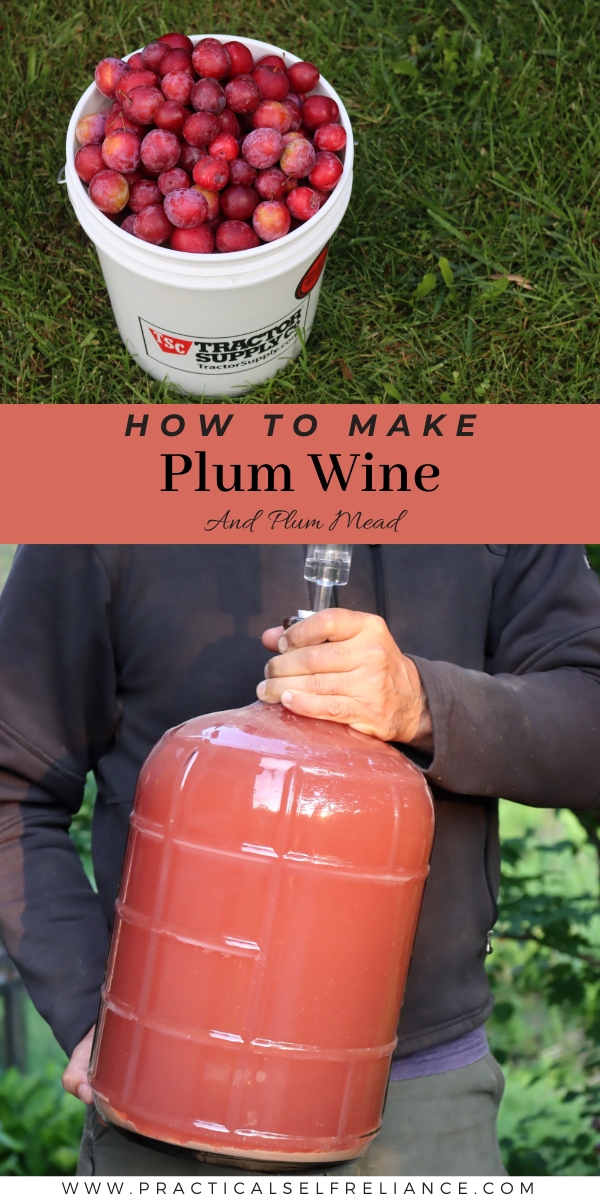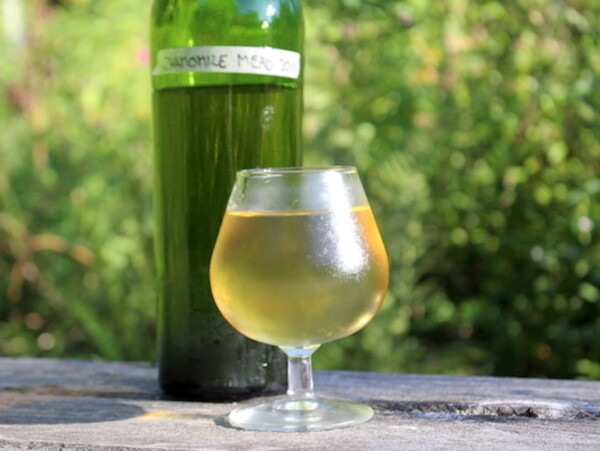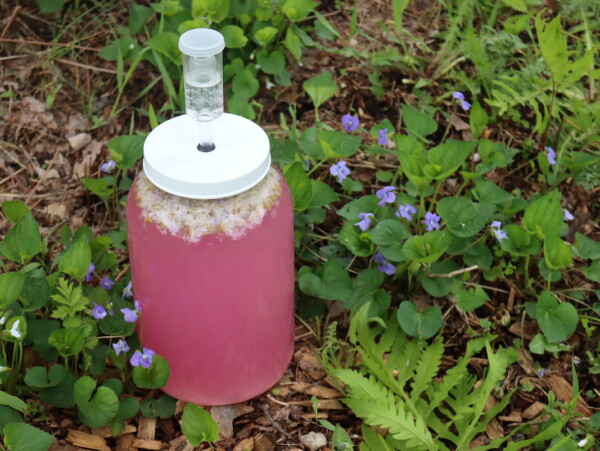Affiliate disclosure: This post may contain affiliate links. Please see our Privacy Policy.
Plum wine is a classic country wine that’s sure to please!
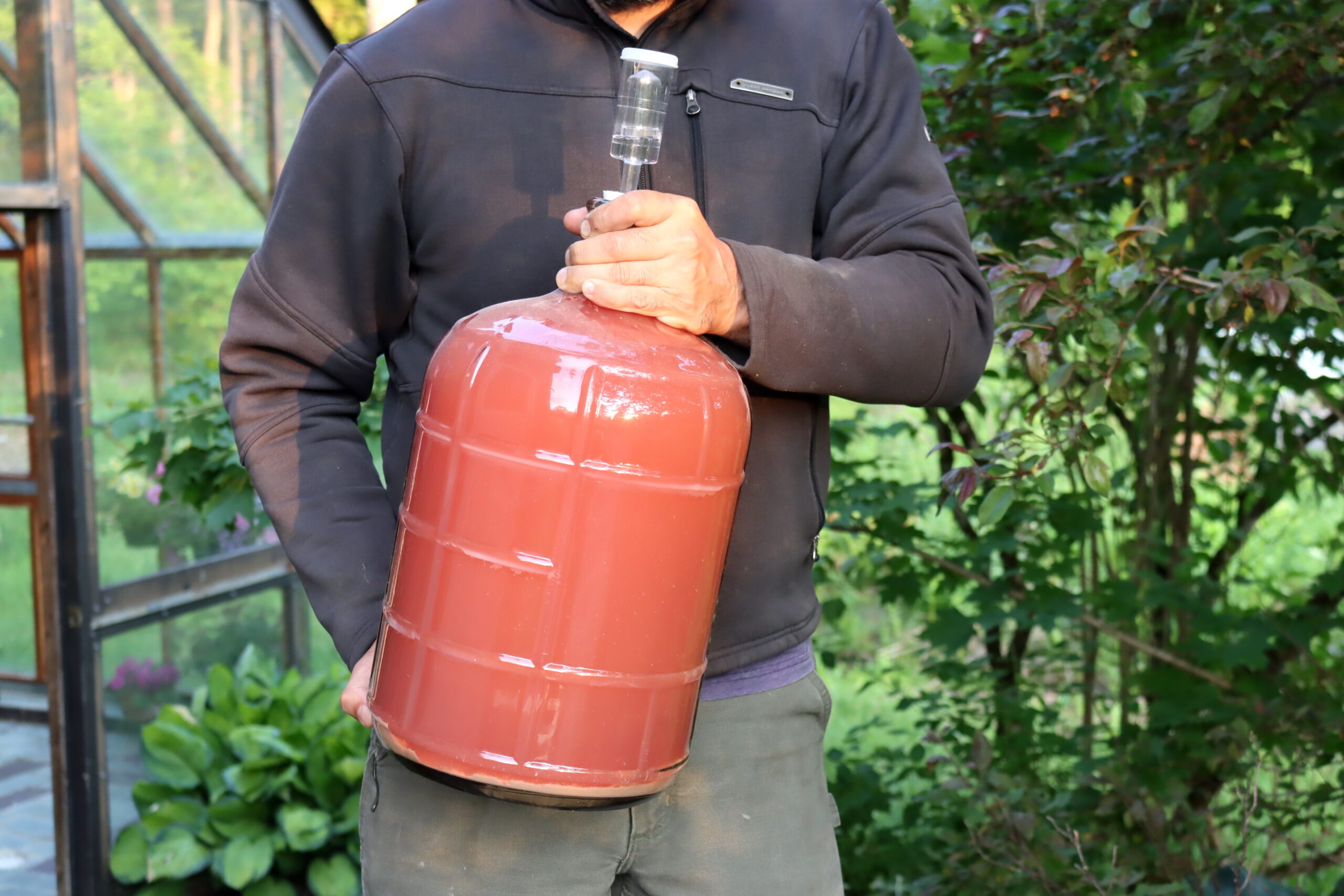
Plum wine may be a bit of a challenge, but it’s a truly satisfying pleasure if done right. All you need is plenty of plums and a few winemaking additives, and you’ll be on your way to making an indulgent plum wine or mead.
Plum wine is wonderful for savoring year-round, but is especially enjoyable in the summertime. Sitting on the back porch with a nice dry, tart, refreshing glass of plum wine sounds nice, doesn’t it?
The individual characteristics of plum wine will vary based on the variety used. As with any fruit, try to select plums at the peak stage of ripeness for the most flavorful wines.
The steps for making plum wine follow the same basic form as with making any small-batch country wine. You’ll add the fruit in for primary along with some sugar, a couple of winemaking additives and a nice strain of wine yeast.
This mixture will ferment for about a week, then you’ll rack it to a new fermentation container leaving the fruit behind. Here fermenting will happen at a more leisurely pace.
The only difference to note is that plum wine makes a lot of sediment (or lees). For this reason, you’ll need to rack it multiple times to avoid these sediments leading to an off-flavor in your wine.
Once the wine clears, you can sample it and bottle it, letting it mature before finally drinking. The process may be a little more involved than other wines, but can be well worth the effort!
I’ve made plum wine a number of times, and it’s always delicious. In this case, I’m working with a bucket of plums from our home orchard, and the pictures are of a 3 gallon glass carboy. The recipe is written to be more general, so that you can make it at home, and it’s sized for a one gallon batch.
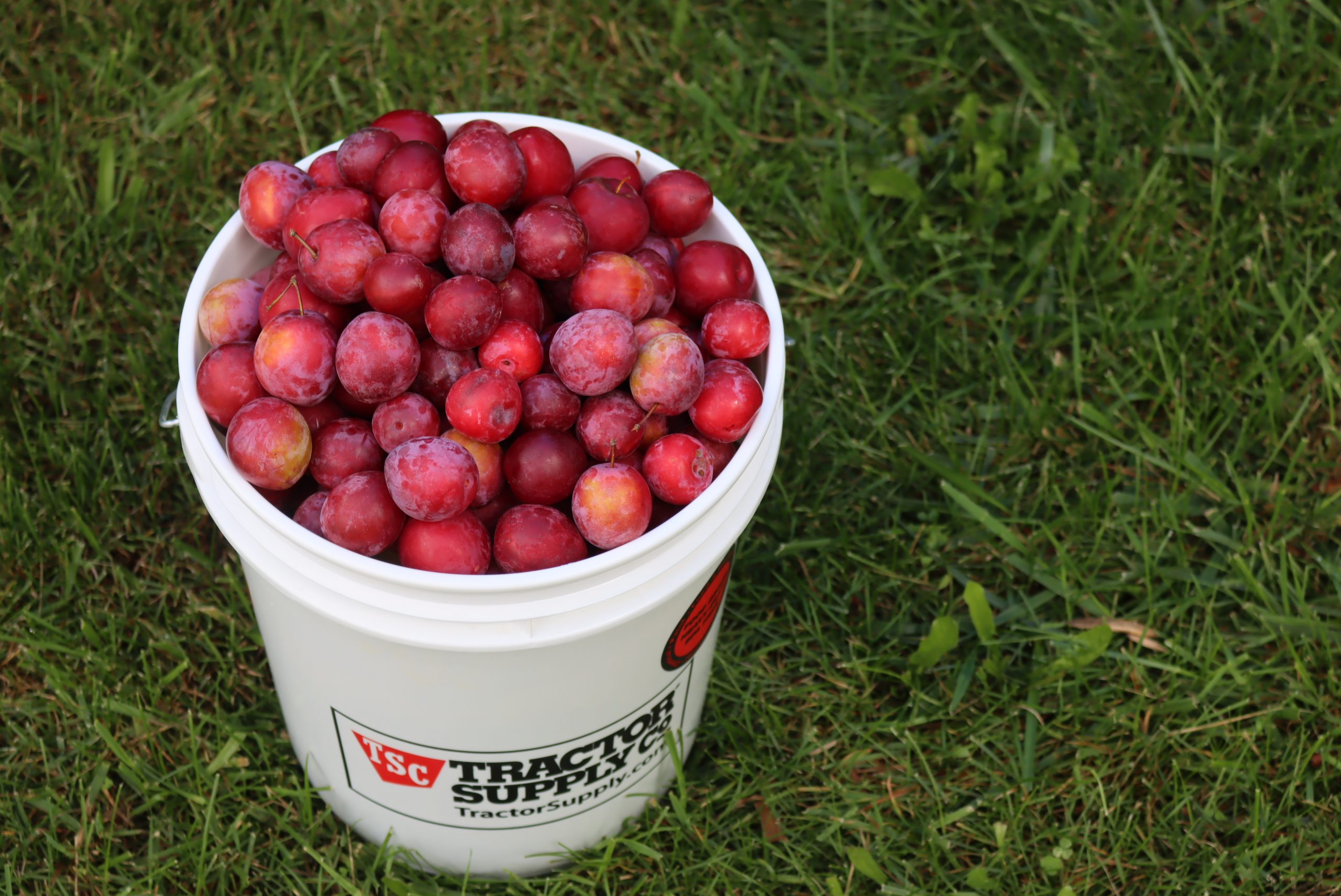
Plum wine can be a bit of a tricky recipe for beginning winemakers, so if you’re new to small-batch winemaking, I recommend you take a look at these guides to help you:
- Beginners Guide to Making Fruit Wines covers the entire winemaking process from start to finish.
- How to Make Mead (Honey Wine) is very similar, but will tell you the differences when working with honey instead of sugar.
- Equipment for Winemaking outlines all the necessary equipment needed for home winemaking.
- Ingredients for Winemaking will let you know what each of your ingredients does (besides yeast).
- Yeast for Winemaking is a vast subject — there are countless strains out there (both common and obscure). This will help you to pick the right one for each and every wine.
Ingredients for Plum Wine
Before undertaking your project, you’ll want to make sure you have all the required ingredients and materials for making plum wine.
Those new to winemaking should check out this introduction to winemaking ingredients to assist you in understanding what each of these things does.
For a one-gallon batch of plum wine, you will need:
- 6 lbs of plums
- 1-½ lbs sugar
- ¾ tsp Yeast Nutrient
- 1-½ tsp Acid Blend
- ⅛ tsp Wine Tannin
- 1 tsp Pectic Enzyme
- Wine Yeast
- Water (to fill)
Does that list seem long? Luckily, many of these ingredients can be bought together in a set. You can purchase the acid blend, pectic enzyme and wine tannin in a nice little kit. Now all you need is a packet of yeast nutrient, and a good strain of wine yeast.
For yeast, Lalvin D47 or Lalvin 71B are often recommended for plum wine and mead.
Lalvin 71B is nice for fruity wines and meads. It’s also helpful as plums can be higher in malic acid, and Lalvin 71B is known for metabolizing malic acid and mellowing the harshness caused by it.
Lalvin D47 will impart wines with strong fruit and floral characteristics, adding delightfully complex notes to wines. It is a moderately vigorous fermenter and can start slowly, but the yeast nutrient should help with this. Alcohol tolerance to 15%.
Yeast nutrient is helpful to make up for nutrients that are lacking in certain wine or mead musts. While your yeast nutrient feeds you wine yeast and promotes a rapid ferment, your yeast nutrient prevents fermentation problems and ensures a complete ferment. Yeast nutrients also help restart slowing or stalled fermentations.
You’ll need an acid blend and some tannins to help balance the flavors of your wine. As for sugar, 1-½ pounds will give you a somewhat dryer wine — you can increase this somewhat for a sweeter wine, but you may want to increase the tannin slightly to ¼ tsp to balance this out.
Additionally, pectic enzyme will help your wine to clear.
If you are making plum mead (or rather plum melomel) instead of plum wine, know that the standard recipe is 1 part honey to 3 parts water. Given that, you will need around one quart (4 cups) of honey for a one-gallon batch of plum mead.
As for honey, wild honey is the best. Both wildflower honey and orange blossom honey can add lovely subtle flavors to melomels (meads made with fruit) and metheglins (meads made with herbs and spices).
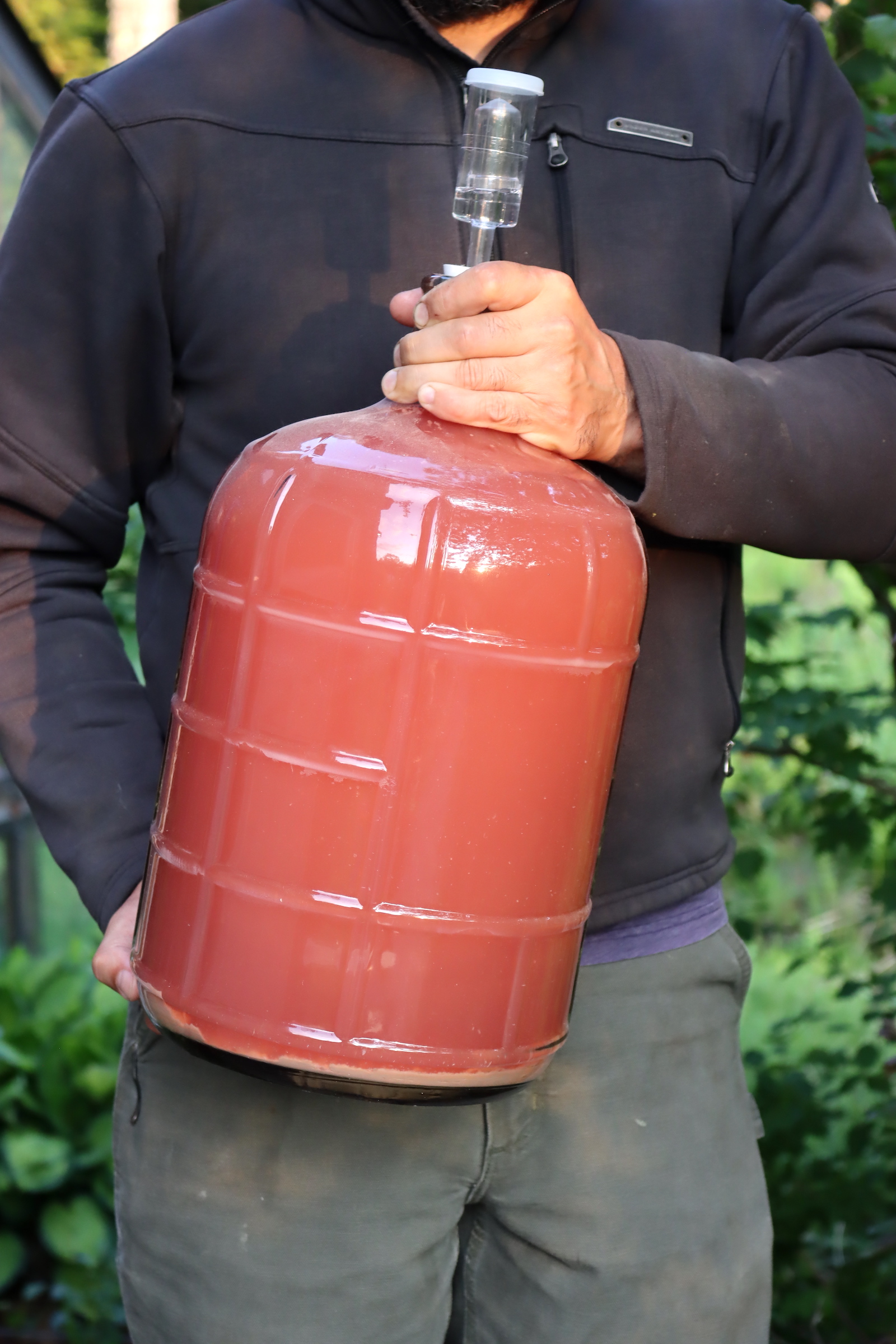
Selecting Plums for Wine
The type of plums you use determine the character of your finished wine, and there is a surprising amount of variation in plum varieties.
- Wild plums have an incredible amount of acidity and tannin, and you’ll want to avoid adding acid and tannin to a wild plum wine.
- Damson plums are rich and yield a truly luscious wine with incredible body, but they contain a good bit of natural tannins and you’ll want to avoid adding tannin powder.
- Greengage plums a light and bright, but without much tannin or acidity. Those plums will need added tannin and acid blend to balance.
I’ve written this plum wine recipe as a generic recipe that works well with most types of cullinary plums that you’ll find in the grocery store or backyard orchard. If you have a particularly intense plum variety, be sure to adjust accordingly. That said, if you’re happy to eat the plum out of hand as is and it tastes wonderful and balanced, this recipe will work as is.
I also have specific recipes for Damson Plum Wine and Greengage Plum Wine, as those are popular varieties that need a bit of a different touch.
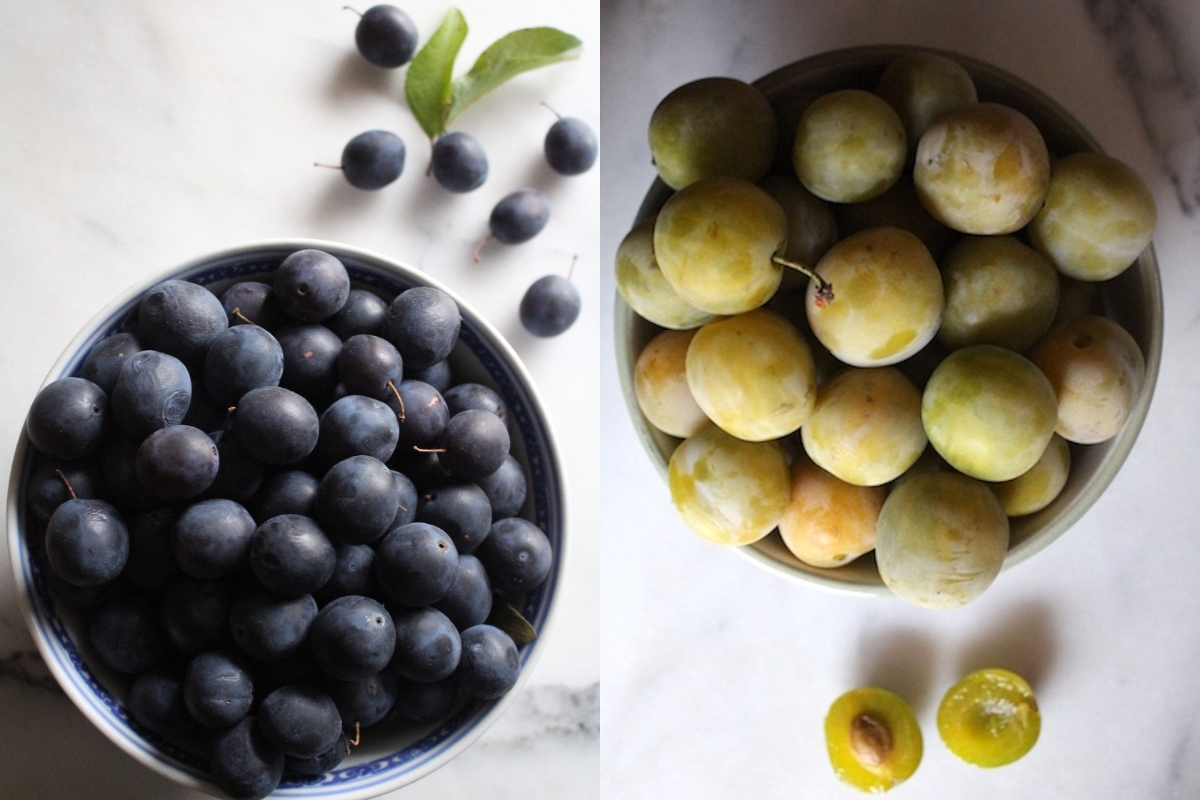
Winemaking Equipment
Now that you’ve sourced all your winemaking ingredients, you’ll need to be sure you have all the necessary equipment. This includes:
- One Gallon Wide-Mouth Carboy for primary ferment
- One Gallon Narrow-Neck Carboy for secondary (frequently sold in a kit with a rubber stopper and water lock together)
- Rubber Stopper and Water Lock (if not included in above kits)
- Brewing Siphon
- Wine Bottles or Flip-top Grolsch bottles
- Bottle Corker and clean, new corks to bottle your wine
- Brewing Sanitizer
Making Plum Wine
When making plum wine, you’ll want to include the fruit in the primary ferment and remove it for secondary.
Begin by washing your fruit to remove any pesky insects or debris and discard any damaged or moldy fruits. Cut the plums in half and remove the stone. Next, chop the fruit into smaller sections and move to a wide-mouth carboy for primary.
(If desired, you can place the fruit in a brew bag for easier removal later on).
Place some water on the boil and add sugar to the fruit. Once boiling, pour over the plums and sugar, then stir to dissolve.
Let the mixture cool and follow by adding all the remaining ingredients except your wine yeast (acid blend, tannin, pectic enzyme, and yeast nutrient).
Dissolve your yeast in some room temperature water to let it rehydrate for about 10 minutes. You don’t want to shock your yeast by adding it straight to the mixture. Add rehydrated wine yeast to the carboy.
Follow this by adding enough water to fill the carboy, leaving about 2 inches of headspace for your ferment to bubble. Seal with a water lock and wait for your primary ferment to start.
In a few days an active, bubbling ferment should emerge. Let the wine ferment here for about 7 days until you see the bubbling begin to die out. This means it’s time for your secondary ferment.
Siphon to a fresh carboy for secondary, leaving the fruit and sediment behind, and top with more water to bring the level up to the neck of the carboy.
Once again, seal with a water lock and allow to ferment for 30 days (around 4 weeks). The wine should then be racked to a clean container, leaving the sediment behind again, as sediment can cause off-flavors in your wine.
Top with more water and seal with a water lock.
Rack your wine to a clean container every 30 days until your wine clears, repeating the process of siphoning, topping with more water and sealing with a water lock.
If you’re making mead and using honey in place of sugar, know that your secondary ferment will be lengthy and honey is typically harder for yeast to digest than sugar. One plum melomel recipe recommends fermenting for up to 9 months.
Once the wine clears, wait another 2 weeks and rack the wine again before tasting. If your wine is too dry at this point you may wish to backsweeten it.
Before backsweetening, rack to a new container and stabilize your wine. You can stabilize wine by adding 1 Campden tablet and ½ teaspoon potassium sorbate, and waiting 24 to 48 hours before adding any sugar. When ready, add sugar by creating a simple syrup from one part sugar and one part water. After adding sugar, reseal and wait another week or two before bottling.
If you’d prefer to skip stabilizing, you can always add sugar and put the wine back into ferment for a month or so, bottling when all signs of active fermentation have stopped.
Once bottled, the wine is best aged for 6 months.
Ways to Preserve Plums
Looking for more ways to preserve a bumper crop of plums?
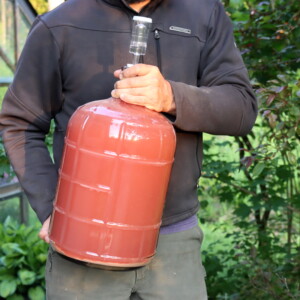
Plum Wine
Ingredients
- 6 lbs Plums
- 1-½ lbs Sugar, about 2 cups per pound
- 1 tsp yeast nutrient
- 1 tsp acid blend
- 1 tsp Pectic Enzyme
- ⅛ tsp tannin powder
- 1 packet wine yeast, see note
- Water, to fill
- Optional ~ Campden Tablet and Potassium Sorbate for Stabilizing, I do not use these
Instructions
- Wash fruit to remove any lingering bugs or debris. Halve plums and remove pits.
- Chop plums into smaller pieces and move to a wide-mouth carboy. (Place plums in a brew bag first, if desired)
- Add sugar to fruit and cover it with boiling water.
- Once cool, add acid blend, wine tannin, pectic enzyme, and yeast nutrient. Stir to incorporate.
- Add wine yeast last. Rehydrate first by placing it in room temperature water for 10 minutes then pitch the yeast.
- Add enough water to leave just 2 inches of headspace and seal with a wide-mouth water lock.
- Ferment in primary for 5 to 7 days.
- Once the active fermentation dies out, siphon to a clean vessel for secondary, leaving fruit and lees behind.
- Ferment in secondary for 30 days then rack to a clean container leaving sediment behind. Top with water to bring the level up to the carboy neck and seal with a water lock. Repeat this procedure every 30 days until the wine clears.
- Once clear, taste the wine and adjust as needed. (See notes for backsweetening.)
- Bottle your wine and seal with corks.
- Allow to age for 6 months for the best flavor.
Notes
Amount of Fruit
You’ll need about 6 lbs of plums for this recipe or 1 gallon of plum juice. Using too few fruits will result in a wine with little plum characteristics or flavor.Yeast
For plum wine, you should choose a wine yeast with moderate alcohol tolerance that adds light fruit flavors or ferments clean. Good yeast choices for plum wine and mead include Lalvin D47 and Lalvin 71B. See notes within the article for the specific qualities of each yeast.Stabilizing and Back Sweetening
If your plum wine is too dry at the end of the secondary ferment, you have the option to backsweeten. First rack to a clean container, then stabilize with 1 Campden tablet and ½ teaspoon potassium sorbate to kill off the yeast and prevent a rapid ferment from starting up again. After 24 to 48 hours add sugar and let ferment for 1 to 2 weeks before bottling. Sugar should be added by heating equal parts sugar and water to make a simple syrup. Amounts vary by taste, but adding ½ cup sugar per gallon of wine is a good estimate. See notes within the article for more detailed information on backsweetening.Nutrition
Nutrition information is automatically calculated, so should only be used as an approximation.
Country Wine Recipes
Want to try your hand at other types of fruit wine?
Fermented Beverages
Keep your carboy bubbling with these…
